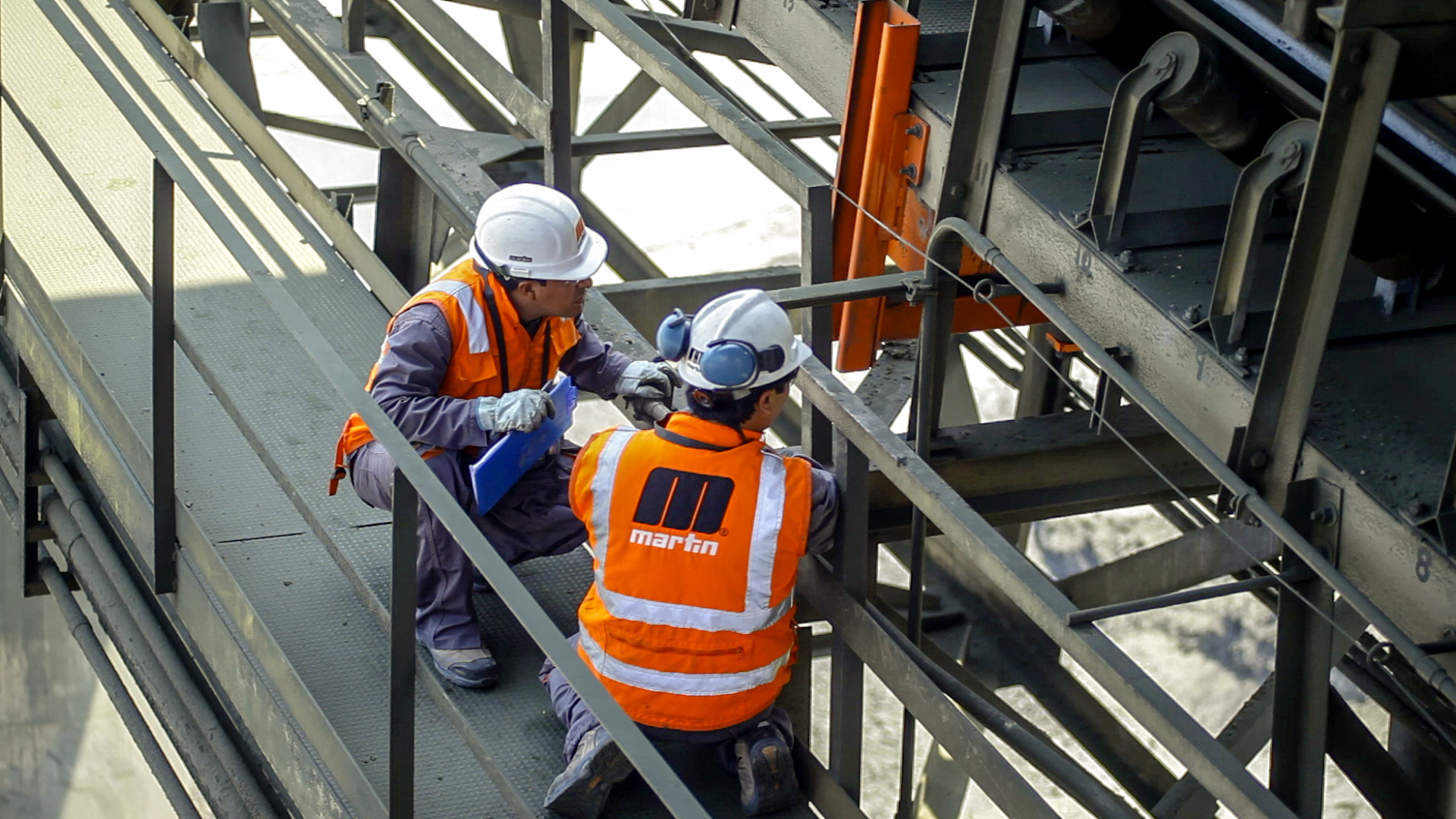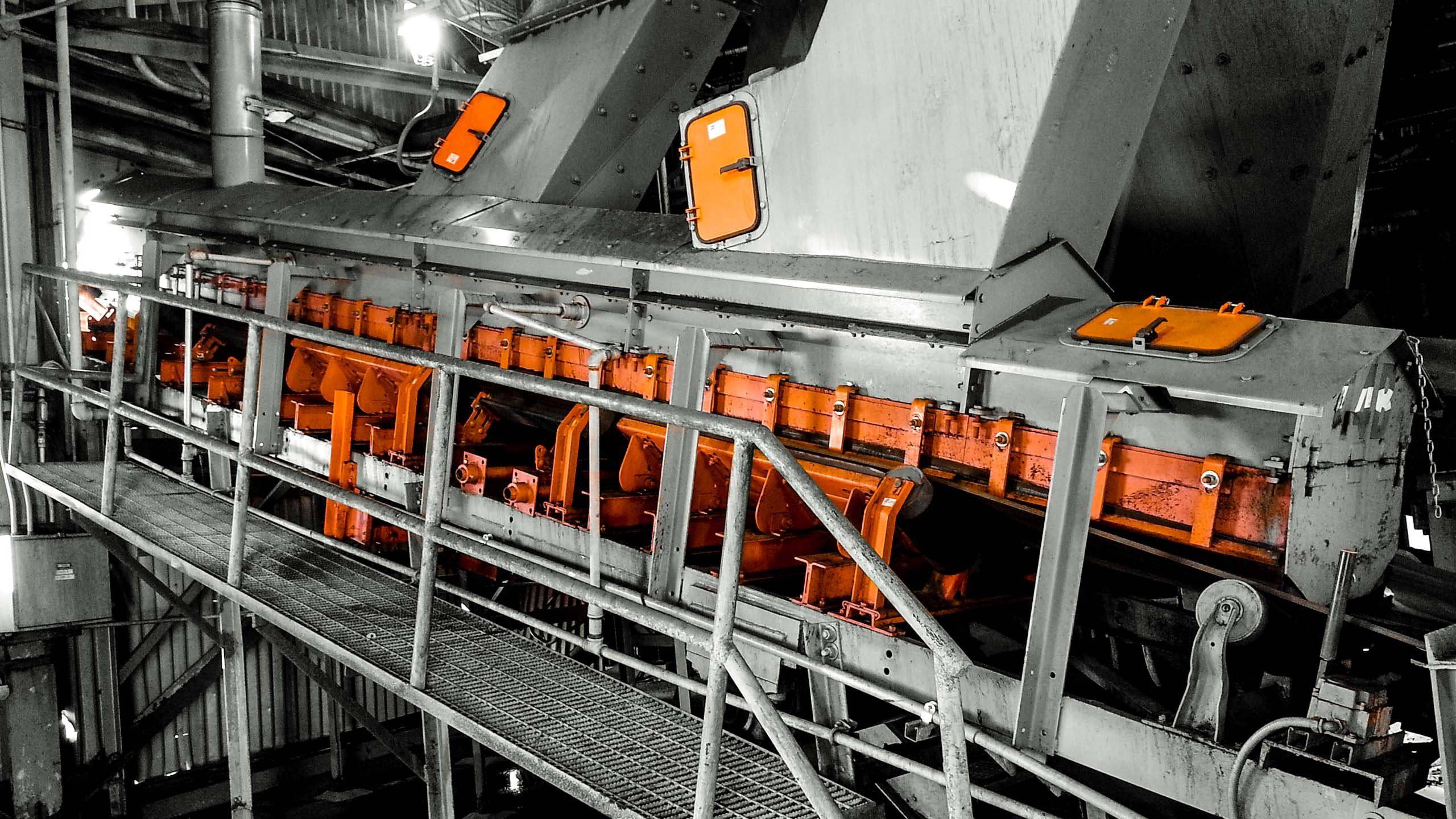Spare Parts
Certain repair parts should be available in inventory. This will allow for both routine replacement of worn parts and speedy completion of unexpected repairs, for a faster return to operations. This inventory should include both the parts “likely to be damaged” and replacement “wear parts,” such as belt-cleaner blades, impact bars, and idlers. Also included in the maintenance stores should be a supply of “rip repair” belt fasteners for emergency repairs.
Conveyor maintenance should involve proper maintenance of each individual component of the conveyor system.
By standardizing across the plant on various components, the size of this stockpile of spare parts, and therefore the expense for these idle parts, can be minimized.
It may be a good idea to keep a “boneyard,” where components removed from service can be stored and available to be cannibalized for replacement parts as necessary. Of course, parts taken from used equipment need to be thoroughly cleaned and inspected before re-use.
Lubrication
Due to the large number of bearings present in conveyor systems and their influence on belt tension and power requirements, lubrication is very important. Following the manufacturer’s recommendations as to the type, amount and frequency of lubrication will enhance life-expectancy of the system’s rolling components.
Care must be taken not to over-lubricate. Over-lubrication can damage bearing seals, which then allows fugitive materials to enter the bearing, increasing friction and decreasing bearing-life. Excess oil or grease can spill onto the belt, where it can attack the cover, decreasing service-life. Excess grease can also fall onto handrails, walkways, or floors, making them slippery and hazardous.
Today, some plants use idlers and other rolling components equipped with sealed bearings. Sealed bearings require no lubrication and, therefore, reduce maintenance.
Conveyor Startup
A belt is like a new pair of shoes: it needs to be “broken in” gradually and carefully to avoid painful moments. Insufficient attention at conveyor startup—either in the initial running of a new system or following a maintenance outage can lead to significant and costly damage.
Typically, conveyor operations does not require the attention of many personnel. This is generally one of the selling points in the selection of belt conveyors over the other forms of haulage. However, it would be a mistake to start up a belt, especially on a new conveyor or on a line that has received extensive modifications, without the attention of extra personnel along its route. Spotters should be in place along the belt run where trouble might be anticipated or would be particularly costly. These observers should be equipped with “walkie talkies” or cell phones and be positioned near emergency shut-off switches. A careful inspection prior to startup should establish that there are no construction materials, tools or structural components left where they can gouge or cut the belt as it begins to move.
The belt should be run empty, slowly at first, then at normal operating speed. The belt should then be gradually loaded to full capacity while checking for possible problems.
See also: Belt Conveyor Maintenance Matters Part 1





















Leave Comment